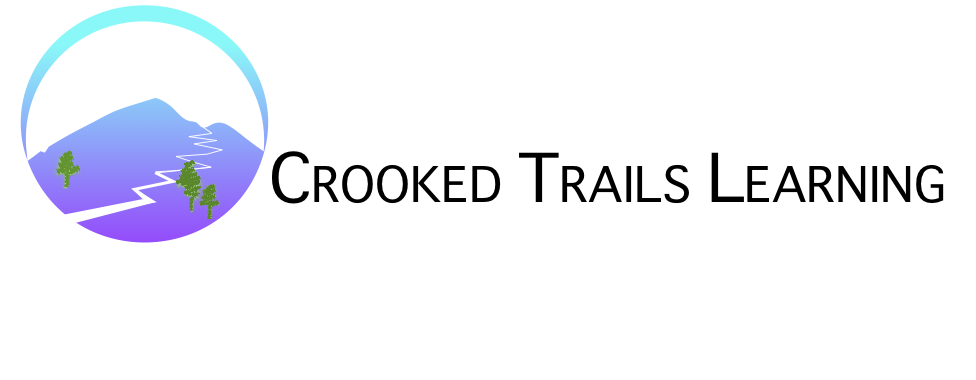I’m Ready to Learn the TPRS Method! Where Do I Start? Five Planks on the Bridge to TPRS - Plank 1
/Overview
If you are absolutely new to TPRS, you can learn the basics - enough to get started - in a day or a weekend. (I’ve even read of some teachers who took a 3-hour seminar, and dove in just on that - depends on your personality and skill set, I guess!) Below, I’ve listed 5 'planks' on the bridge to becoming a TPRS teacher and gathered resources for each step. At each plank, pick the resource or resources that interests you most and have at it. To keep everything organized, each plank has its own article, accessible on the sidebar.
Summary of the 5 Planks:
1. Get a feel for TPRS. Watch a video of a TPRS class, preferably in a languageyou don’t know. That way you will get a good sense of what TPRS is and how students learn in a TPRS class.
2. Understand the basics. Several experienced TPRS teachers have written or posted videos explaining the basics of TPRS.
3. Get some training. If you can, attend a workshop. If not, watch a video series and/or read a book about the specific procedures. TPRS is not hard, but there are a few principles and techniques - inviting students into the process, circling, slowing down, pointing, teaching to the eyes - that you want to absorb before you jump in.
4. Choose a curriculum, or decide to adapt a curriculum you may already have to this method.
5. Hone your skills. Every so often, watch or read a little bit more. Add another idea or trick to your repertoire. TPRS teachers are very generous on the web about sharing their experiences, and there are many, many helpful websites. You will probably collect your favorite websites to check in on.
Plank 1
Plank 1: Get a feel for TPRS. Watch a video of a TPRS class, preferably in a language you don’t know. That way you will get a good sense of what TPRS is and how students learn in a TPRS class.
Here are some great videos of TPRS classes in different languages. I’ve watched many TPRS videos, and these are some of the best. You will see that each teacher has their own slightly different style but all are effective. Most of these teachers have more videos, websites, books and workshops, so you can always look for more from them. Take your pick, and enjoy.
French 1: Ben Slavic has a whole series of videos that go along with his books about how to do TPRS. This is video #1 in a series of videos. Ben introduces three phrases, and then story-asks to such an extent that the class provides every detail. Also subtitled with explanations. This is the video that initially cemented my interest in TPRS. (Concert in the basement of 7-11.) 63 minutes.
https://www.youtube.com/watch?v=zEd7q9UWrLY
French 1: Michelle Kindte is teaching beginners. Kindte herself has 3 years of experience with TPRS. You will see she introduces about 7 structures before the story, sticks to her script without inviting lots of student ideas for the story, uses very simple props, students remain engaged. (Bellybuttons on the moon.) 21 minutes.
https://www.youtube.com/watch?v=zxxJNDxQrZ4
French overview: A short edited view of Blaine Ray teaching TPRS right off the airplane. No prep, no props, solicits lots of student ideas. The subtitles explain what he is doing, so this a good quick overview. Get ready to laugh, even if you don’t know French! This is only an edited overview, however, so make sure you watch another, longer video as well. 5 minutes.
https://www.youtube.com/watch?v=9DRblDN2sXY
Spanish 2: Blaine Ray teaches a story “La Besadora del Año.” This is a very helpful video because again, he walks into the class for the first time and engages the whole class. You don’t see him introduce phrases beforehand, but you do see how Blaine goes back and forth between present and past, without the students realizing they are practicing different tenses. This video also has subtitles to explain exactly what Blaine is doing and why. 41 minutes.
https://www.youtube.com/watch?v=IyQaAMWwwEw
Spanish 1: Alina Filipescu and her students really get into this story with lots of props and ideas and laughter. She does establish meaning before the story and stays in the present tense. (Elephants invade a fast food hangout called Curry in a Hurry.) 23 minutes.
https://www.youtube.com/watch?v=Pg9ZYtDekY0
Spanish super-beginner: Blaine Ray teaches a Spanish class in China to students who have never had any Spanish. He is teaching teachers the TPRS method, so explains the class ground rules very clearly. 15 minutes.
https://www.youtube.com/watch?v=ITje7eHFC_o
Spanish 1: Students are in Week 10. Adriana Ramirez has her own system of using TPRS: 3 days of story building, 1 day of student skits, 1 day of reading, 1 day of quizzing. On a screen she projects all the structures for a three day story at once, and points to them as the story progresses. She begins with very careful review questioning, and sticks closely to her script, but still elicits some subtle humor. First in a series of 6 videos. (Faulty alarm clock.) 18 minutes.
https://www.youtube.com/watch?v=tOxcBvb7vAU
Mandarin 1: First day, by Terry Waltz. Chinese also has tones so requires even more repetitions. Makes me want to learn Chinese! The first few weeks of a class may not involve full-blown stories, just actions and conversation. (Who is cool?)
https://www.youtube.com/watch?v=D9jKfHRZQfs (28 minutes)
But it is difficult to see the Terry’s whiteboard, so also watch:
https://www.youtube.com/watch?v=QBtzzvi4oMw (23 minutes)
Russian 1: Day 1. You can really see the benefits of going slowly, and making sure the students comprehend everything with this difficult language. It is easy to see the beginning structures on the board, the pointing and the circling. (Personalized Q and A). 62 minutes.
https://www.youtube.com/watch?v=AtgHO1V4uDE

